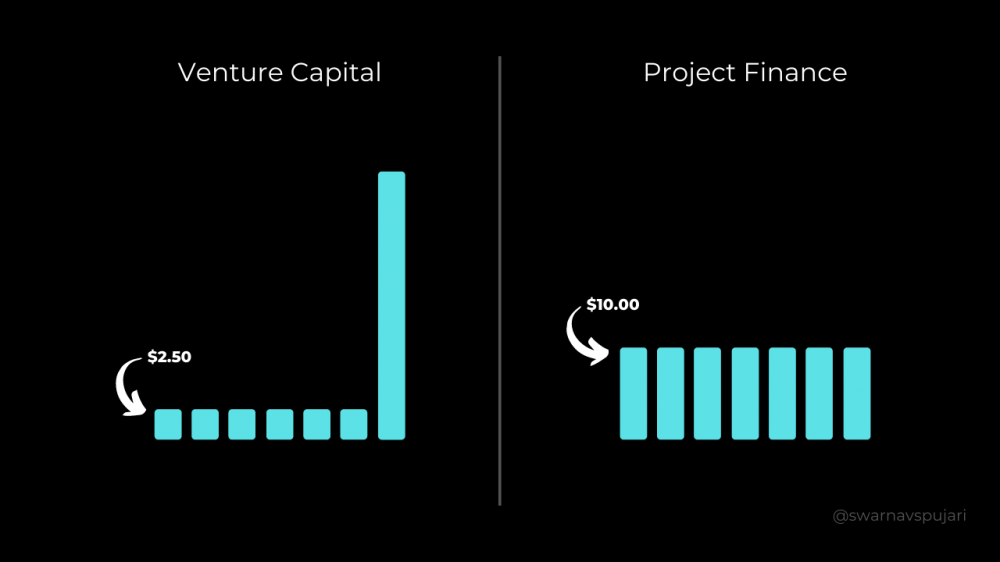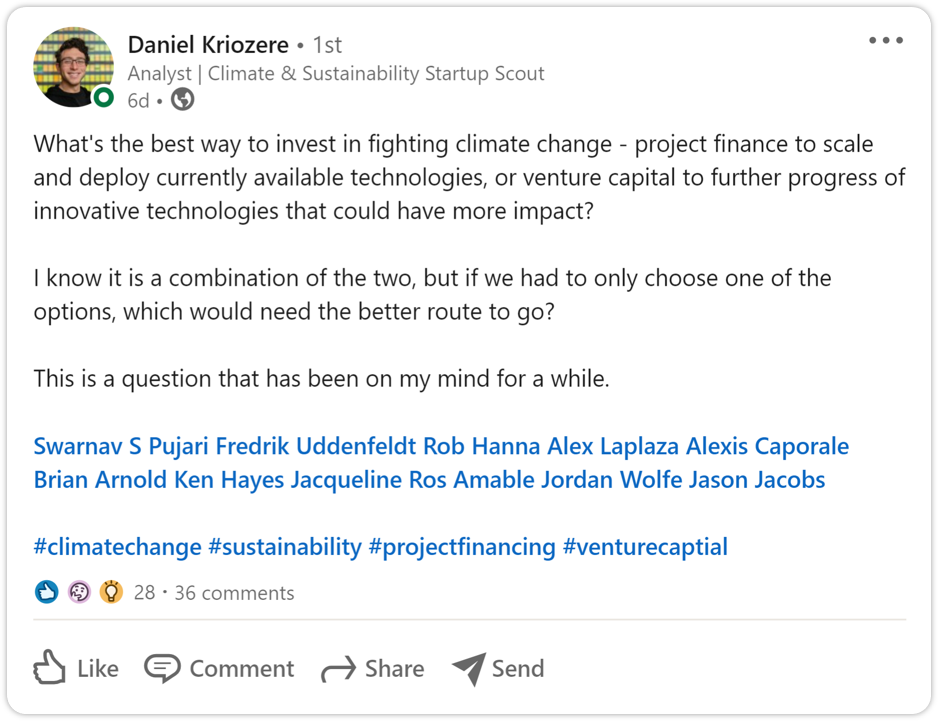
Is Venture Capital Or Project Finance The Key To Solving Climate Change?
How can we best scale and deploy technologies that fight climate change? Where does climate finance fit it on the timeline of embracing climate solutions? Guest writer Daniel Kriozere shares his insights into the application of venture capital and project finance in funding climate solutions.
How can we best scale and deploy technologies that fight climate change? Where does climate finance fit it on the timeline of embracing climate solutions? Guest writer Daniel Kriozere shares his insights into the application of venture capital and project finance in funding climate solutions.
Outline
I was bored Sunday morning, so I posted a question on LinkedIn with a question that I’ve been thinking about for a while now.

As I talk to many startups on a weekly basis, usually regarding fundraising strategy, I have noticed one of two scenarios:
- Early stage startups (pre-seed/seed) are struggling to fundraise.
- Later stage startups are looking to do an equity raise and use the funds where project finance would typically be used.
This led to my question of the role of venture capital vs project finance.
Meanwhile, the answer to this question is not black and white, the post ignited some interesting discussion.
The Problem:
There is a gap between lab-scale prototypes (government/seed funded) and fully commercialized plants/processes with predictable performance and economics (project finance).
At the earliest stages, government favors funding academic work, whereas corporates are wary of risk. Companies need resources to de-risk and pilot technologies. Later-stage startups seek venture and/or project finance to build the first commercial systems.
To Answer the Original Question:
Project finance is needed in the short-term to deploy and scale technologies currently in the market that can have a great impact. Project financing today is best used for proven technologies like wind, solar, and geothermal energy. The tricky piece of project finance is modeling risk, which is why it is harder for new technologies to receive project finance, even when the capital costs of these smaller MVP units are significantly less than that of a full-sized asset.
Venture capital is needed in the long-term to build and accelerate new ideas to create impact. However, it is difficult to put the cost burden entirely on investors with high-risk appetites.
The solution to this short-term vs long-term tradeoff is a cooperation between public and private agencies. Among those, Corporate VC is playing an important part. New partnerships and investment vehicles are combining capital with other resources. Additionally, we may even see more challenges, similar to Elon Musk’s $100M carbon capture challenge.
The conversation got more interesting — pulling in other pieces of the puzzle.
Even though project finance is more of a priority, in terms of timing, the decision relies upon what is applicable when and under what market circumstances. Additionally, to be able to scale and deploy technologies, there needs to be a strong market. Strong markets mean more options to fund and finance businesses/projects.
The takeaway is that there will be a variety of investment vehicles and partnerships to continue to drive innovation forward to fight climate change. Among that, we will likely see new models to assess risk, as well as more creative and new finance structures.
My Thoughts:
Meanwhile the initial question was intentionally written to ask which financing options are better, I agree that it will take a combination of venture capital and project finance to help scale and deploy technologies to fight climate change. We need to prioritize which technologies receive funding.
The path forward will include finding a new way to assess and underwrite technology risk to help earlier stage technologies deploy, and creating new vehicles/structures for funding.
Daniel Kriozere holds a BS in Chemical Engineering from UC Davis, and recently completed coursework in energy innovation from Stanford. Daniel currently works at Lawrence Livermore National Laboratory in facility safety documentation, risk analysis and product management. Concurrently, he volunteers with Techstars, the American Institute of Chemical Engineers, One World and runs 2 newsletter in the climate sector: The Impact and Innovate Climate. His passion is at the intersection of sustainability, innovation, and business.
This article was originally featured on March 16th 2021 in the newsletter The Impact, an Op-Ed email newsletter focused on clean tech that is written by analysts, founders and executives in the industry.
More like this
So You're Ready to Step Up on Climate Action. Now What?
Folks ready to learn and do more about climate change have an array of options to get started. What are their respective pros and cons, and how does Terra.do stack up?
Our Next Cohort's Nickname Is the Manatees. Here's Why That's Special.
We've named each graduating class after animals at risk in our warming world, and we've just finished our first full lap through the alphabet.
Couldn’t We All Use More Storage?
Where are we going to put all that clean power from variable renewables like solar and wind? The world of batteries is already ramping up.

 Background
Background



